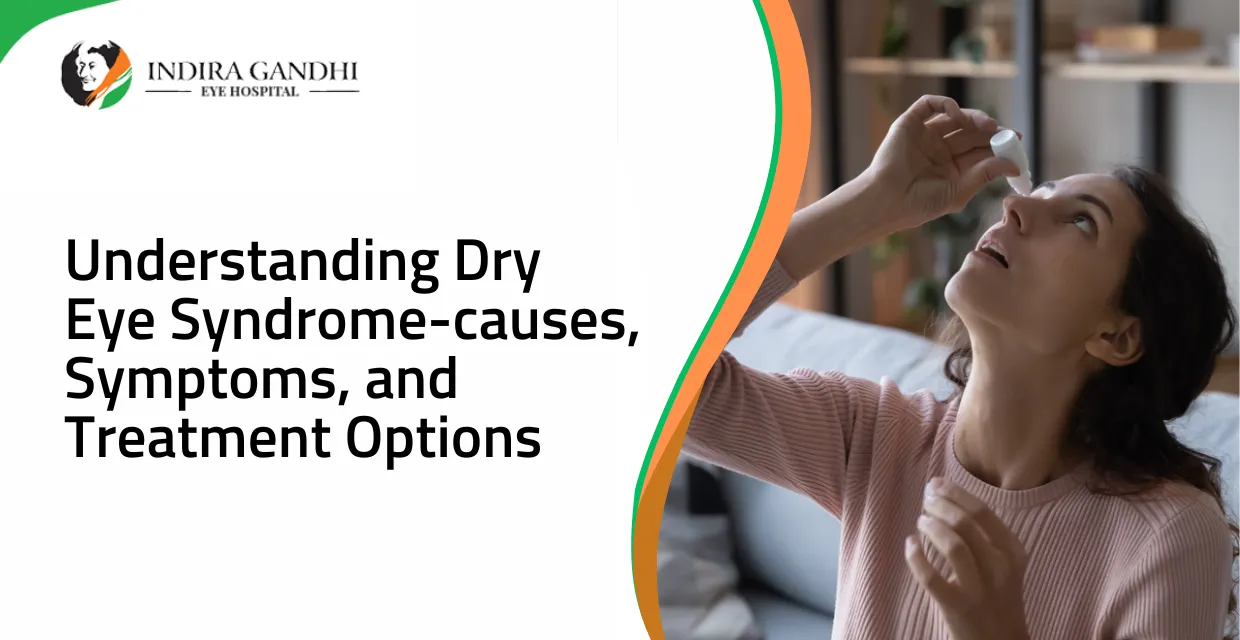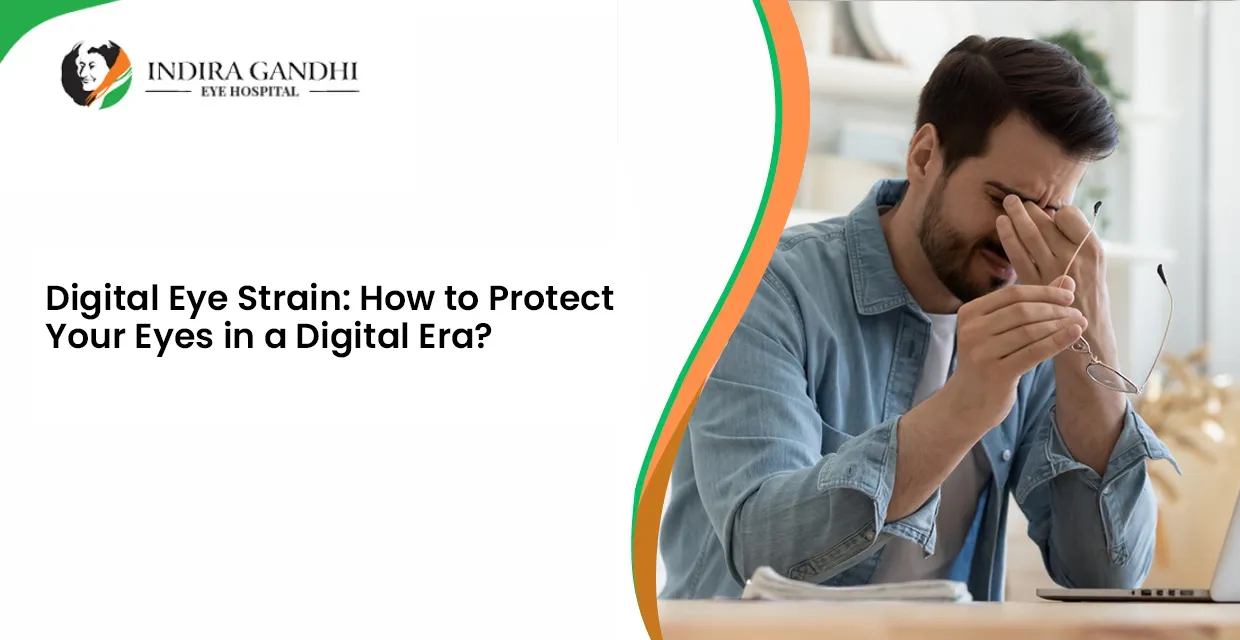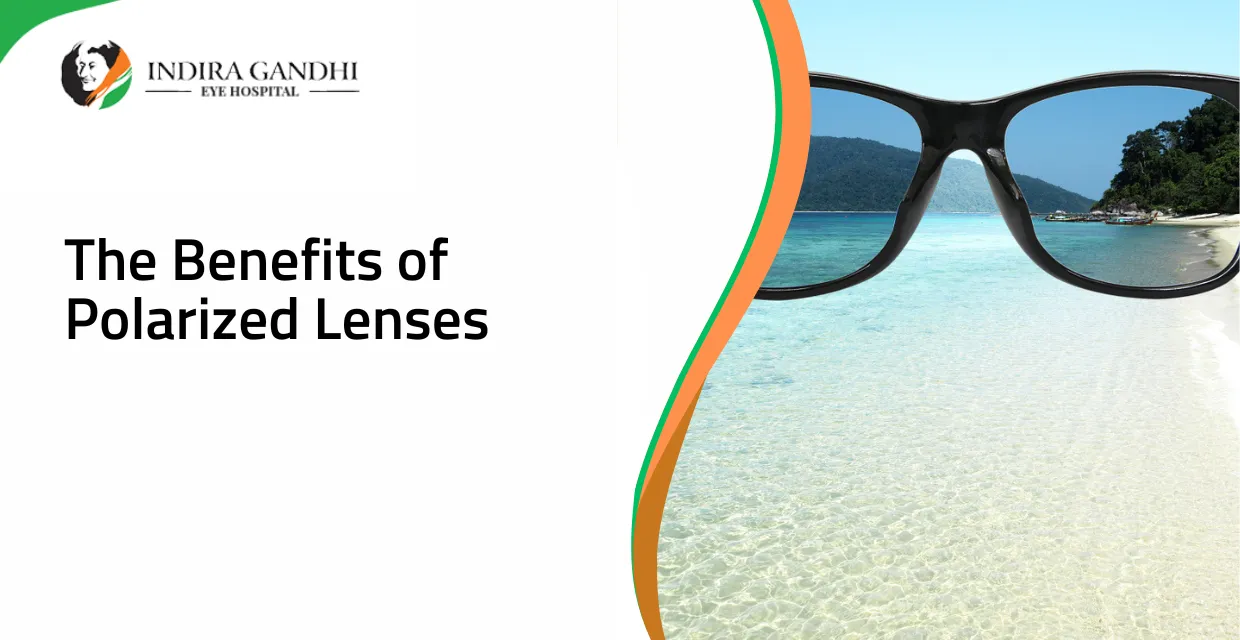Dry eye syndrome is a common and often debilitating eye condition that can affect anyone at any age. If left untreated, it can lead to more serious vision problems and even blindness.
What is Dry Eye Syndrome?
Dry Eye Syndrome affects tear production and quality, leading to inadequate lubrication of the eyes. It can result from medication, environmental factors, medical conditions, or ageing. Common symptoms include burning, itching, redness, light sensitivity, foreign body sensation, and blurry vision. Treatment options at Indira Gandhi Eye Hospital & Research Centre range from lifestyle changes and artificial tears to lubricating ointments, warm compresses, supplements, medications, and surgery. Natural remedies such as using a humidifier, applying lukewarm water-soaked cotton cloth on closed eyelids, and taking breaks during work also help prevent DES.
What Are the Causes and Symptoms of Dry Eye Syndrome?
Dry eye syndrome affects millions of people worldwide, causing discomfort and vision problems. At Indira Gandhi Eye Hospital and Research Centre, our team of top eye doctors and specialists is committed to helping those with this condition. Here's what you should know:
Common causes of dry eye syndrome include environmental factors like wind and smoke, hormonal changes associated with ageing or menopause, certain medications, medical conditions, and age.
Symptoms of dry eye syndrome include redness of the eyes, burning sensations after long periods without blinking, itchy eyes caused by foreign particles, blurred vision due to reduced oil production, and sensitivity to light.
Treatment options range from artificial tears to surgery based on the severity of your symptoms. Lifestyle modifications and dietary changes can also help manage discomfort. Seeking professional advice from our ophthalmologists at Indira Gandhi Eye Hospital and Research Centre can help protect against further damage from environmental factors.
Exploring Treatment Options to Tackle Dry Eye Syndrome
Dry eye syndrome is a common condition that can cause discomfort and affect your quality of life. Understanding the causes, symptoms, and treatment options available for dry eye syndrome is essential to find the best way to manage it.
Dry Eye Syndrome can be caused by various environmental factors, such as smoke or dust particles in the air, certain medications that interfere with tear production, and medical conditions such as thyroid disease or Sjogren's Syndrome. Common signs and symptoms include red eyes (conjunctival hyperemia), burning sensation (ocular discomfort), light sensitivity (photophobia), and blurred vision (visual impairment).
When it comes to treating Dry Eye Syndrome, there are several treatment options available, depending on its severity. Artificial tears are often prescribed for mild cases, whereas more severe cases might require punctual plugs or immunomodulators to reduce inflammation associated with dryness. Adopting lifestyle changes can also make a huge difference in managing this condition; wearing protective glasses while outdoors or avoiding digital screens for extended periods of time are some examples of how an individual can improve their symptoms over time. It is important to note, however, that long-term management requires regular consultation with an ophthalmologist or optometrist, who may prescribe further treatments depending on your specific case.
Finally, it is worth noting potential risks associated with certain treatments for Dry Eye Syndrome, which could include infection from punctual plugs or possible side effects from immunomodulators; however, these risks can be minimized by following instructions given by your doctor carefully when using these treatments. Make sure you consult them before starting any new regimen! Additionally, if you feel like you need extra support managing this condition, there are many online support groups dedicated to helping individuals living with Dry Eye Syndrome who have access to resources that may help them better manage their condition over time.
Best Treatments for Dry Eye Syndrome at Indira Gandhi Eye Hospital and Research Centre
Dry eye syndrome affects millions of people each year, causing uncomfortable symptoms such as burning, stinging, or scratchy eyes, redness, excessive tearing, and blurry vision. Luckily, there are numerous treatments available that provide relief. At IGEHRC, we specialize in comprehensive care for patients with dry eye syndrome. Our experienced team of eye specialists provides personalized care tailored to each patient's unique needs.
Before starting any treatment plan, it's essential to understand what causes dry eye and who is at risk. At IGEHRC, we diagnose dry eye syndrome and discuss treatment options tailored to each individual situation. Our treatments and procedures include using artificial tears, wearing protective sunglasses, limiting time spent on digital devices, taking omega 3 supplements, undergoing eyelid cleaning treatments, Punctal occlusion, and LipiFlow® Thermal Pulsation- an advanced treatment option that improves oil production in the eyes by targeting meibomian gland dysfunction inflammation.
We provide high-quality patient-centred care for all types of ocular conditions, including Dry Eye Syndrome. With our years of experience, we have helped countless patients improve their vision quality and get relief from their dry eye symptoms. We also provide helpful tips on how you can manage your condition at home, including lifestyle modifications, avoiding certain activities, and home remedies.
Conclusion
Dry eye syndrome is a common and often debilitating eye condition that affects millions of people worldwide. It is important to understand the causes, symptoms, and treatment options for dry eye syndrome to find the best way to manage it. At Indira Gandhi Eye Hospital and Research Centre, our team of top eye doctors and specialists is dedicated to helping those with this condition. We provide comprehensive care tailored to each individual's needs by offering various treatments such as artificial tears, warm compresses, Punctal occlusion, or Lipiflow® Thermal Pulsation for relief from symptoms. Contact us today for more information about dry eye syndrome treatments!





